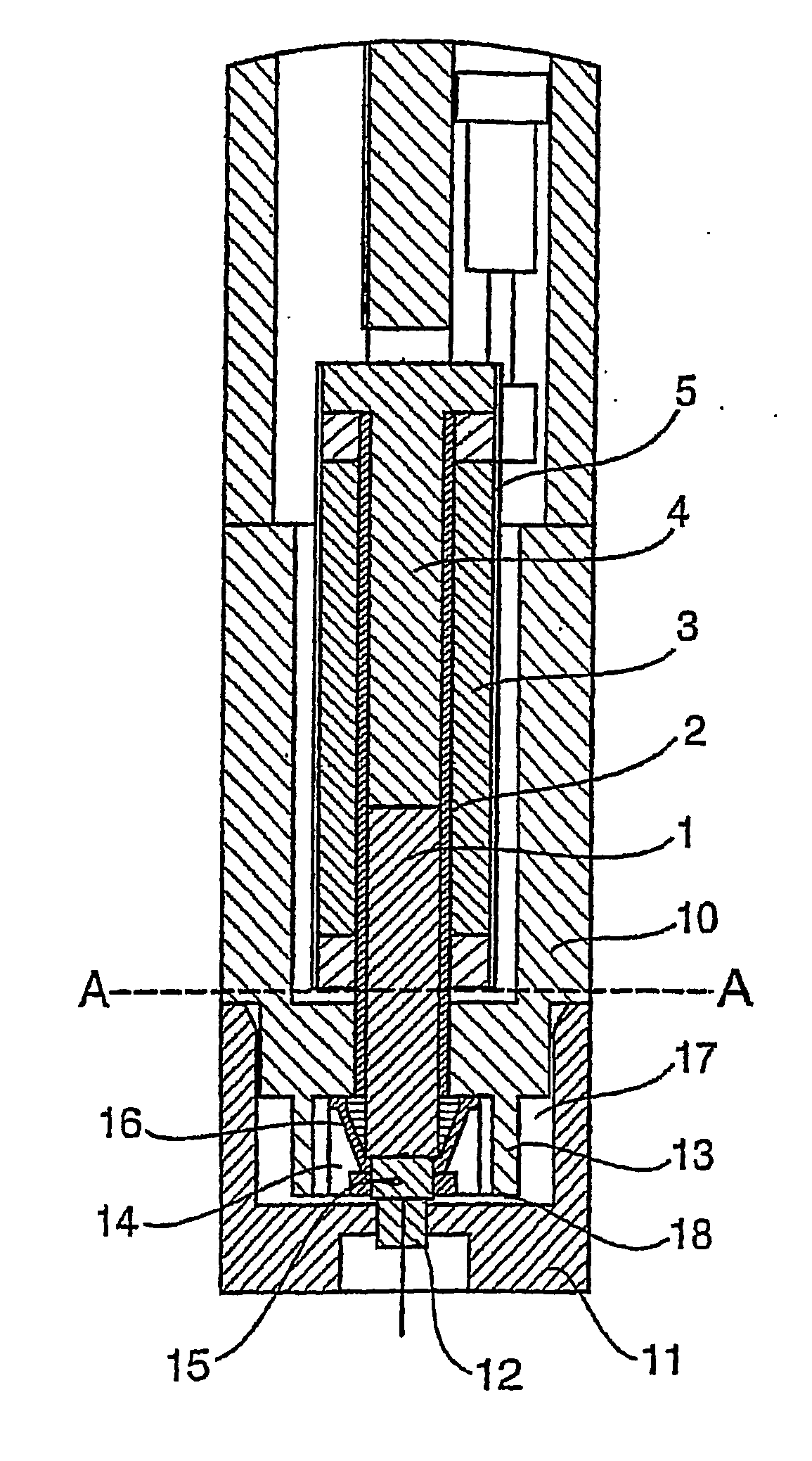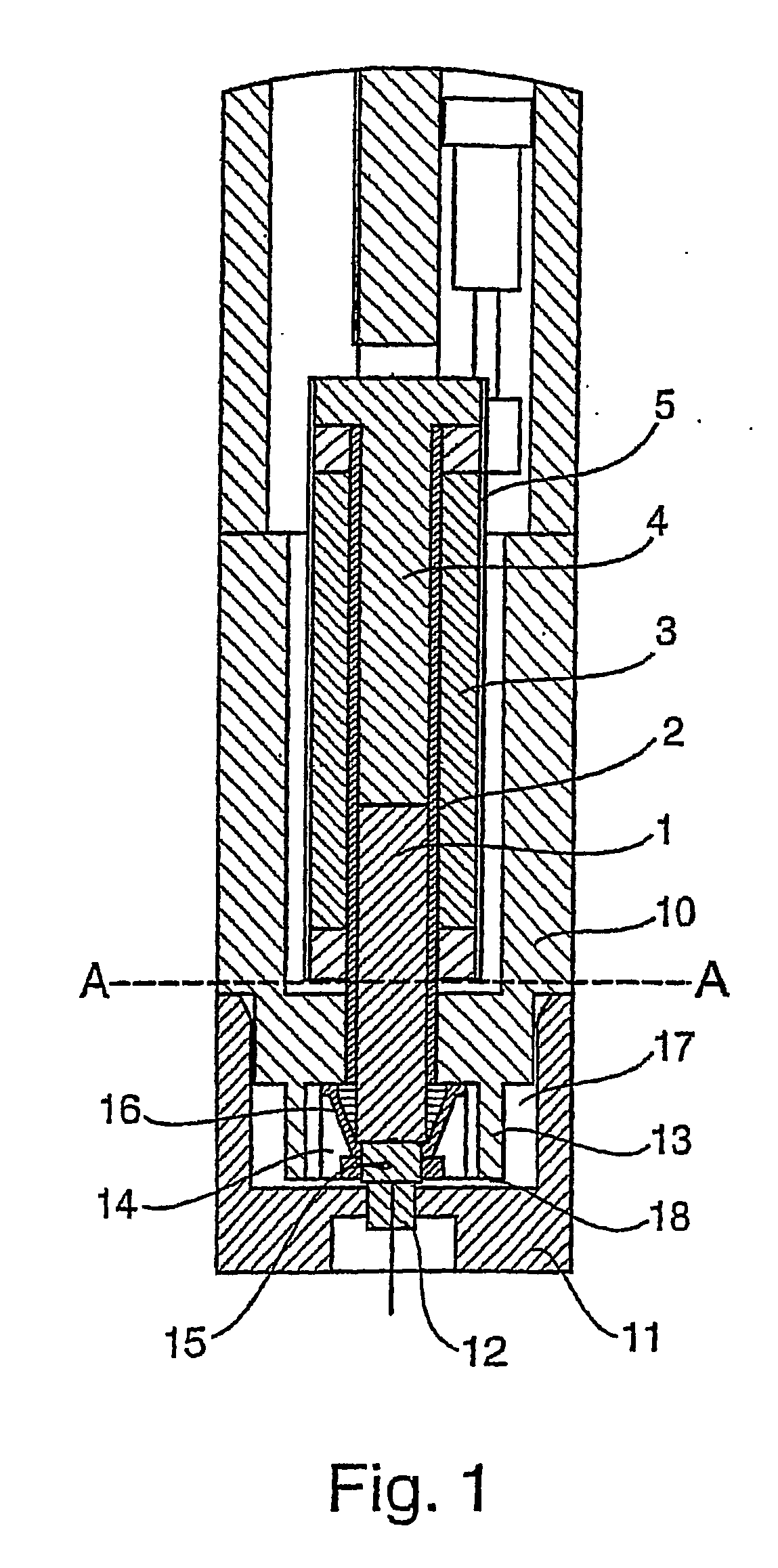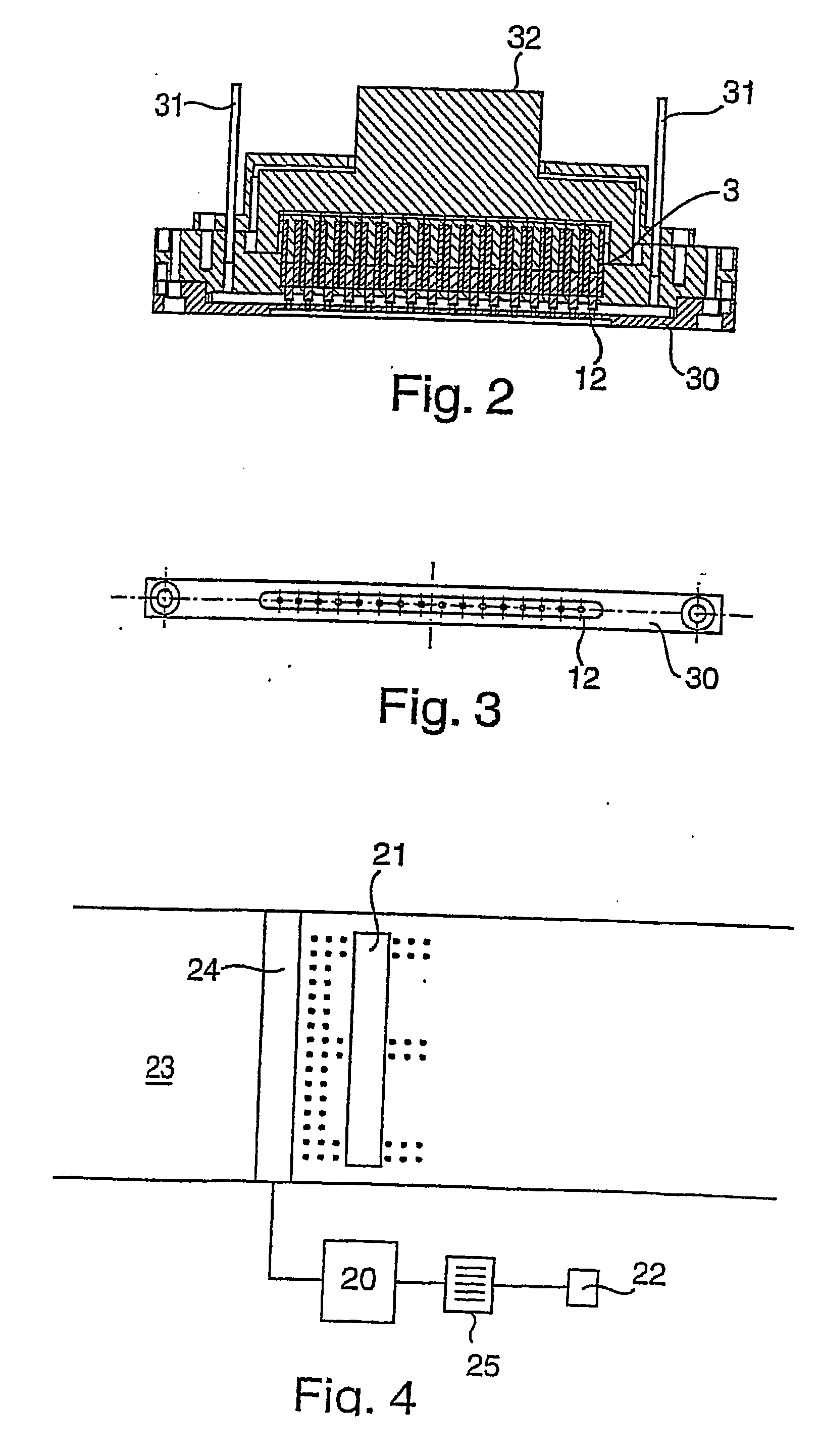Method
a printing ink and method technology, applied in the direction of dyeing process, printing, measurement device, etc., can solve the problems of preventing the depriming of the nozzle, the uneconomic use of a plurality of different strands in the large-scale manufacture of commodity materials, and the inability to secure the application of printing ink to the individual, so as to achieve the effect of preventing the problem of nozzle depriming and high viscosity inks
- Summary
- Abstract
- Description
- Claims
- Application Information
AI Technical Summary
Benefits of technology
Problems solved by technology
Method used
Image
Examples
Embodiment Construction
[0058] The valve of FIG. 1 comprises a plunger 1 which is journalled as a close, free sliding fit for axial reciprocation in a stainless steel tube 2. Tube 2 has a thin insulating coating or sleeve (not shown) formed upon its outer face and supports a coil 3 wound upon it. Coil 3 is supplied with an electric current from a source (not shown) under the control of a computer 20, shown in FIG. 4. A stop 4 is mounted at the proximal end of tube 2 to limit the axial retraction of plunger 1 within tube 2. The coil 3 is encased in a metal cylindrical housing 5.
[0059] The above assembly is mounted in a support housing 10 which extends axially beyond the distal end of the coil and has a transverse end wall 11 which carries a jewel nozzle 12. In the embodiment shown in FIG. 1, housing 10 has an axially extending internal annular wall 13 which forms the radial wall of the valve head chamber 14 into which the distal end of the plunger extends. The distal end of the plunger 1 carries a terminal...
PUM
| Property | Measurement | Unit |
|---|---|---|
| Pressure | aaaaa | aaaaa |
| Pressure | aaaaa | aaaaa |
| Diameter | aaaaa | aaaaa |
Abstract
Description
Claims
Application Information
 Login to View More
Login to View More - R&D
- Intellectual Property
- Life Sciences
- Materials
- Tech Scout
- Unparalleled Data Quality
- Higher Quality Content
- 60% Fewer Hallucinations
Browse by: Latest US Patents, China's latest patents, Technical Efficacy Thesaurus, Application Domain, Technology Topic, Popular Technical Reports.
© 2025 PatSnap. All rights reserved.Legal|Privacy policy|Modern Slavery Act Transparency Statement|Sitemap|About US| Contact US: help@patsnap.com



